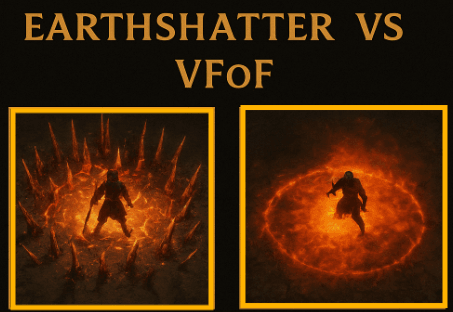How Does poe2’s Environmental Interaction System Transform Combat?
Path of Exile 2 introduces a revolutionary environmental interaction system that fundamentally transforms combat from static engagements into dynamic tactical experiences. Unlike traditional ARPGs where environments serve as mere backdrops, Path of Exile 2 makes the world an active participant in every encounter, creating unprecedented strategic depth and variety.
The system begins with fully destructible environments that can be leveraged for tactical advantages. Players can collapse ancient pillars to create temporary barriers or crush groups of enemies, shatter frozen lakes to generate hazardous terrain that slows advancing foes, and destroy explosive barrels to trigger chain reactions. This environmental manipulation extends to skill interactions, where fire spells can ignite flammable surfaces to create spreading infernos, frost abilities can generate temporary platforms across water bodies, and lightning attacks can arc through metallic structures. The battlefield becomes a dynamic playspace where creative players can use their surroundings to gain significant advantages, transforming every encounter into a unique strategic puzzle.
Dynamic weather systems introduce another layer of tactical complexity to combat scenarios. Torrential downpours in coastal regions gradually flood low-lying areas, forcing players to seek higher ground while creating new opportunities for aquatic combat and altering the effectiveness of various elemental skills. Dense fog in marshlands reduces visibility, making ranged combat more challenging while providing cover for stealthy approaches. These weather effects aren’t merely visual flourishes but meaningful gameplay elements that can dramatically alter combat dynamics. The day-night cycle further enhances this system, with certain creatures displaying different behaviors and vulnerabilities based on the time, while rare environmental interactions only trigger under specific conditions.
The terrain itself becomes a crucial factor in combat strategy through elevation and line-of-sight mechanics. Higher ground provides tactical advantages for ranged characters, while narrow passages can be used to funnel enemies into choke points. Destructible cover elements can be strategically eliminated to expose enemy positions or create new sight lines. This spatial awareness adds depth to combat positioning, rewarding players who master the three-dimensional aspects of each battlefield and consider their surroundings as carefully as their skill rotations.

Environmental hazards introduce sophisticated risk-reward considerations that change how players approach encounters. Volcanic geysers might periodically erupt, damaging anyone nearby but also providing temporary damage buffs to those brave enough to stand close. Corrupted ground can slowly drain health while empowering certain dark magic spells. Electrified water conducts spells in unexpected ways, and unstable magical anomalies can randomly augment or nullify specific skill types. These interactive elements encourage constant movement and adaptation, breaking the monotony of stationary combat while testing players’ situational awareness and ability to think on their feet.
The system seamlessly integrates with character progression through new passive nodes and skill modifications that specifically enhance environmental interactions. Certain builds can specialize in manipulating battlefield conditions, while others might focus on mitigating environmental hazards. This integration ensures that environmental combat remains relevant throughout the entire gameplay experience, from early campaign missions to the most challenging endgame content. The weapon-swap mechanic gains additional strategic depth when combined with environmental considerations, as players can maintain one weapon set optimized for standard combat and another specifically designed to leverage or counter environmental effects.
poe2 items sale‘s environmental combat represents a significant evolution in action RPG design, demonstrating how interactive surroundings can enhance both strategic depth and visceral excitement. By creating battlefields that feel alive and responsive, it establishes new standards for dynamic combat encounters that reward clever thinking and quick adaptation alongside traditional combat skills. This sophisticated approach ensures that every fight remains engaging and unpredictable, proving that the battlefield itself can be as important as the combatants upon it.

